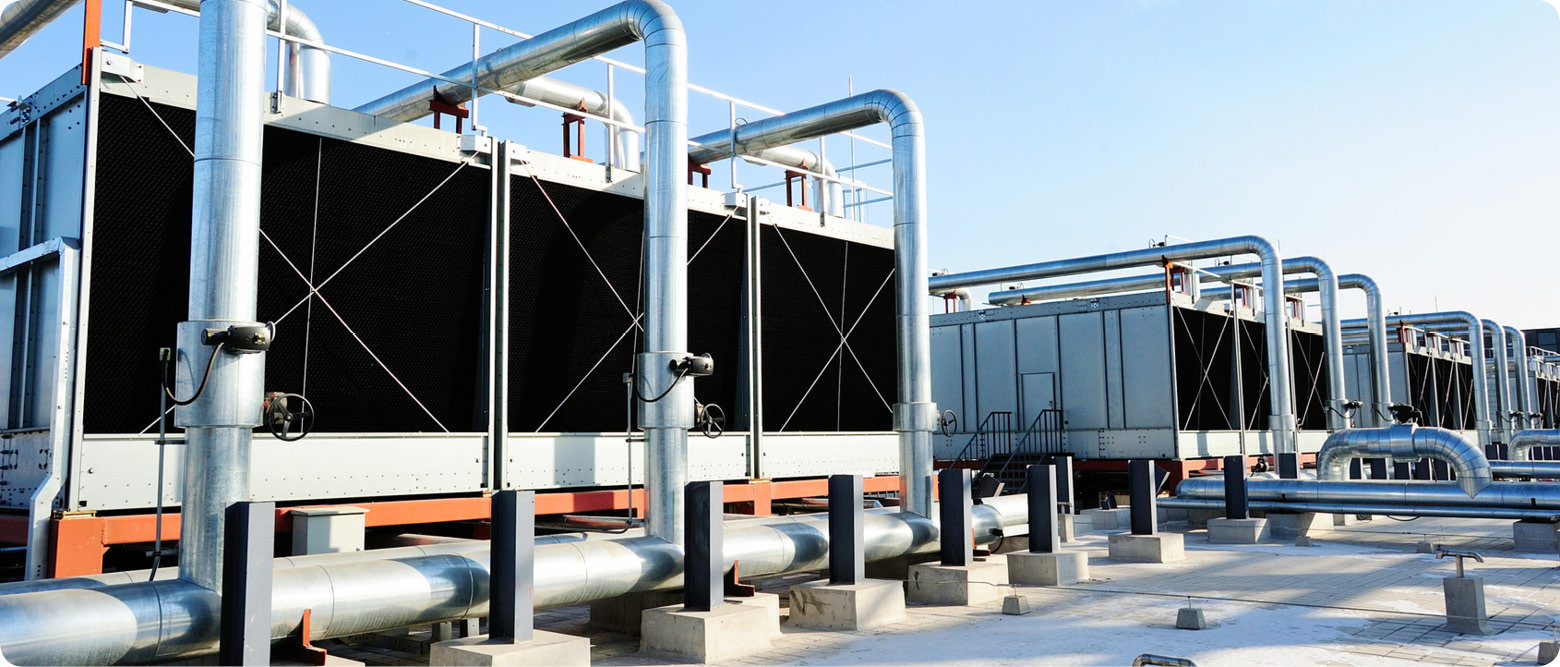water cooling industrial uses info Chemical Man
Water cooling is a method of heat removal from components and industrial equipment. As opposed to air cooling, water is used as the heat conductor. Water cooling is commonly used for cooling automobile internal combustion engines and large industrial facilities such as steam electric power plants, hydroelectric generators, petroleum refineries and chemical plants. Other uses include cooling the barrels of machine guns, cooling of lubricant oil in pumps; for cooling purposes in heat exchangers; cooling products from tanks or columns, and recently, cooling of various major components inside high-end personal computers such as CPUs, GPUs, and motherboards. The main mechanism for water cooling is convective heat transfer.
Industrial cooling towers may use river water, coastal water (seawater), or well water as their source of fresh cooling water. The large mechanical induced-draft or forced-draft cooling towers in industrial plants continuously circulate cooling water through heat exchangers and other equipment where the water absorbs heat. That heat is then rejected to the atmosphere by the partial evaporation of the water in cooling towers where upflowing air is contacted with the circulating downflow of water. The loss of evaporated water into the air exhausted to the atmosphere is replaced by "make-up" fresh river water or fresh cooling water. Since the evaporation of pure water is replaced by make-up water containing carbonates and other dissolved salts, a portion of the circulating water is also continuously discarded as "blowdown" water to prevent the excessive build-up of salts in the circulating water.
On very large rivers, but more often at coastal and estuarine sites, "direct cooled" systems are often used, instead. These industrial plants do not use cooling towers and the atmosphere as a heat sink, but put the waste heat to the river or coastal water instead. These OTC systems thus rely upon a good supply of river water or seawater for their cooling needs. Many facilities, particularly electric power plants, use millions of gallons of water per day for cooling. Such facilities are built with intake structures designed to pump in large volumes of water at a high rate of flow. These structures tend to also pull in large numbers of fish and other aquatic organisms, which are killed or injured on the intake screens.
The warmed water is returned directly to the aquatic environment, often at temperatures significantly (to aquatic life) above the ambient receiving water. Thermal pollution of rivers, estuaries and coastal waters is a consideration when siting such plants.High-grade industrial water (produced by reverse osmosis) and potable water are sometimes used in industrial plants requiring high-purity cooling water.
A hospital in Sweden relies on snow-cooling from melt-water from to cool its data centers, medical equipment, and maintain a comfortable ambient temperature.
Some nuclear reactors use heavy water as cooling. Heavy water is employed in nuclear reactors because it is a weaker neutron absorber. This allows for the use of less enriched fuel. For the main cooling system, normal water is preferably employed through the use of a heat exchanger, as heavy water is much more expensive. Reactors that use other materials for moderation (graphite) may also use normal water for cooling.
Marine vessel use
Water is an ideal cooling medium for vessels as they are constantly surrounded by water that generally remains at a low temperature throughout the year. This does however pose new challenges as cooling systems operating with sea water need to be manufactured from materials that are suitable for the environment. A heat exchanger for example will need to be manufactured from materials such as Cupronickel, Bronze or Titanium to protect it from erosion or corrosion. The velocity will also need to be far more restricted compared with a fresh water cooling system. If the velocity is too low; then sand and other sediments can block the tubes. If the velocity is too high then the tubes can be eroded by the sediments in the water.


Leave a comment